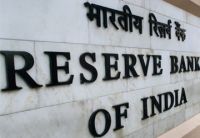
The last monetary policy revision by the RBI governor on October 30 has witnessed the central bank continuing with its high interest rate policy in the cover of inflation combating despite fall in GDP growth rate to new unbearable lows. Finance Minister P Chidambaram has outraged that the government is making a ‘walk alone’ on the growth front because of the unfriendly monetary policy stance by the RBI. The macroeconomic environment at present is dominated by the undesirable combinations of slowing growth, high inflation and persistence of high interest rate.
The RBI is going to make a mid-quarter monetary policy revision on December end, amidst projections that the economy may register one of the lowest growth rates in ten years. People in the government and in the industry are frequently expressing frustration at RBI’s continuation of the high interest rate policy. There is strong perception that the RBI’s hard interest rate policy is responsible for slow growth.
RBI Governor who vetoed a much needed interest rate cut during the last during the meeting of experts now faces credibility loss because of his failure to contain inflation despite the 13 times continuous increase in repo rate from March 2010.
The next monetary policy revision should consider two important developments that occurred during the last two months. First is the fiscal deficit control measures made by the government on the fuel subsidy front and policy decisions on disinvestment. Secondly, the rupee has made a comeback as a result of the foreign investment promotion policies by the government may soften imported inflation. In essence, the government has tried to bring momentum in the economy and it is expecting RBI’s initiative on this front.
The RBI has posted some arguments for the ineffectiveness of the anti-inflationary policies. A leading complaint of the RBI is that inflation in the country is also a fiscal byproduct. Of course, fiscal deficit has contributed to inflation. But, the fiscal expansion has been more than offset by the decline in private sector expenditure.
Informal inflation targeting
Monetary policy execution in the country over the last two-three years reveals a couple of interesting developments. First one is the introduction of a new operating procedure for monetary policy by the RBI in May 2011. Under this new procedure, the repo rate, which is the interest rate anchor now, has been made the single policy rate variable. Secondly, the RBI, like an inflation targeting central bank by giving primacy to short run interest rate using inflation countering strategy is persisting with it at the same time, sidelining priorities like providing inducement to economic growth. The first development itself signifies a near migration to an informal inflation targeting regime by the RBI.
Inflation targeting monetary policy framework is followed by central banks in advanced countries and a few emerging market central banks. Under inflation targeting, the key instrument is the short run interest rate (repo). The monetary transmission process starts with the central bank raising policy rate (short term interest rate) to target inflation. Increase in short term interest rate raises the market interest rate. In the next stage of the transmission mechanism, increased market interest rate represented by lending rates reduces consumption and investment and thus aggregate demand. The resultant decrease in income ensures decline in inflation.
The same philosophy of inflation targeting has been stressed by Dr Subbarao in his speech at IIM Kozhikode when he advocated that sacrificing GDP in the short term is a small price necessary for reign in price rise.
Perhaps, the RBI might have overenthusiastic at the limelight that the central bankers including the Fed are getting at the post financial crisis phase. The innovation of unconventional monetary policy in ageing economies may have encouraged the RBI to embrace inflation targeting quite informally, but without giving enough attention to some of the pre-requirements for short run interest rate oriented inflation targeting to work.
Testing RBI’s inflation management strategy
We should be accommodative of the RBI’s management of the inflation scenario and need not be worried of losing a little bit of growth while ensuring medium term price stability. But how long and deeper should be the loss of GDP growth in ensuring price stability is a relevant question to evaluate the effectiveness of the present inflation targeting strategy. The present policy is rooted in the new operating procedure advocated by Deepak Mohanty.
Mohanty (2012) himself has made a study about the effect of interest rate policy by the RBI on GDP growth and inflation. His analysis (mentioned in RBI Annual Report 2011-12) shows that a policy rate(repo) increase by the RBI had produced negative effect on output growth with a lag of two quarters and a moderating effect on inflation with a lag of three quarters. Indeed, an examination of the policy rate’s effect on output and prices in India during the last two years on the basis of Mohanty’s predictions is enough to assess the working of inflation targeting measures.
RBI has launched the present hard interest rate phase in March 2010. Then started the now famous thirteen times upward revision of the policy rate relieved a little in April 2012. The initial stages of the policy rate increase can be considered as restoration of the rate to normalcy or a part of the exit strategy from the accommodative monetary policy stance during the financial crisis period. If the normal policy rate can be taken as 6% in the Indian context, the repo rate increase to 6.25% on November 2, 2010 is the beginning of the high interest rate regime effectively. The rate has increased to the peak 8.5% in October 2011.
There is no doubt that GDP growth rate has responded well to the policy rate hike as quarterly growth rate has came down to 5.8 %. But on the price front, as per the predictions of Mohanty, the time for interest rate increase to hit inflation (three quarters) has well passed, but the price level continues to rein at high levels. Even after eight quarters of launching the high interest rate oriented inflation fighting or almost four quarters after making interest rate signal at its peak, inflation has not been responded to monetary policy. In essence, the high policy rate pursued by the RBI since the last two years has killed growth without killing inflation. The economy has entered into a stagflation phase.
Reasons for ineffective targeting
Why monetary policy is losing its credibility to fight inflation in India? This is because, the policy of using high short term interest rate to counter inflation for a long time is workable in supply stabilizing and especially in demand deficient economies, where ageing produces built in demand compression and excess capacity ensures supply stability. On the contrary, in India, supply instabilities, structural factors and continuous dependence on imports for key inputs including crude oil are making demand concentrated output depressing anti- inflationary policies; permanent failures. These supply instabilities are beyond the reach of the RBI instruments.
A revision of the strategy is needed
The economy is experiencing pain in the form of reduced economic growth which has not been rewarded by the promised decline in inflation. A couple of quarters or more is not needed to empirically verify the ineffectiveness tight interest rate oriented demand constraining measures when supply factors remain uncontrollable. Continuing high interest rate is capable of depressing income but cant yield price level decline. On the other hand, decline in income, depressed earnings for the corporate and reduced revenue for the government are producing adverse feedback effects. So far, the corporate sector has started to record sizable bad debt under the strain of declined earnings. This is the beginning of a systemic risk for financial stability.
Disguised implementation of inflation targeting in a supply distorting and demand surplus economy like India will create more problems than solving a couple. Hence, the RBI now can think of revising its strategy of inflation combating and reducing the policy rate to softened levels is a necessary beginning for that end.











